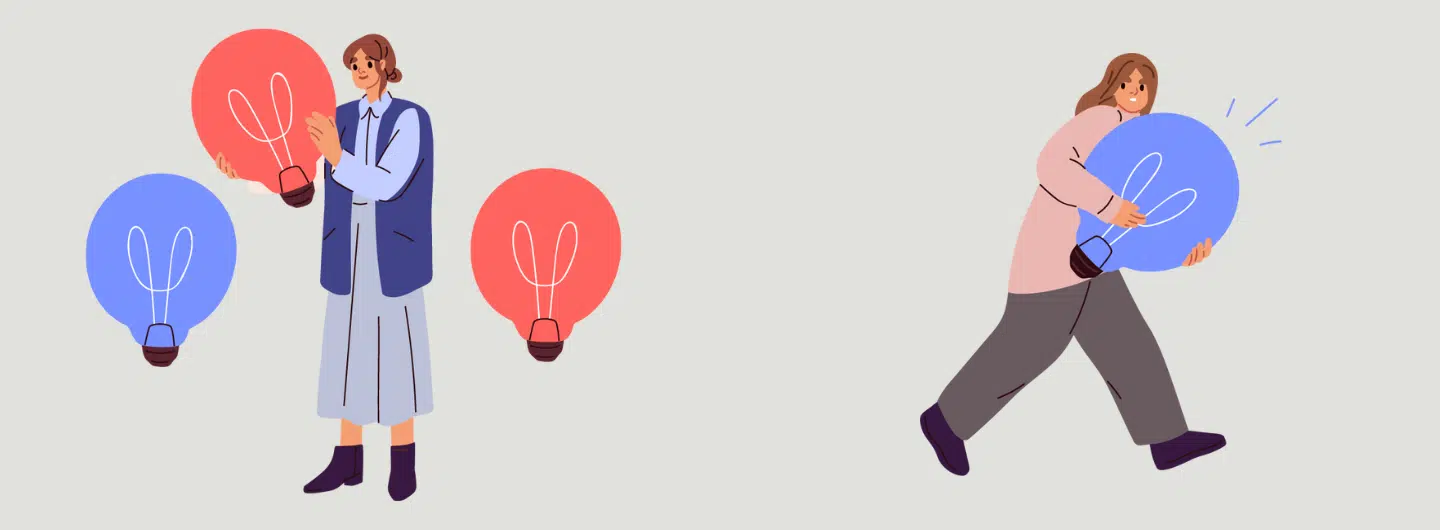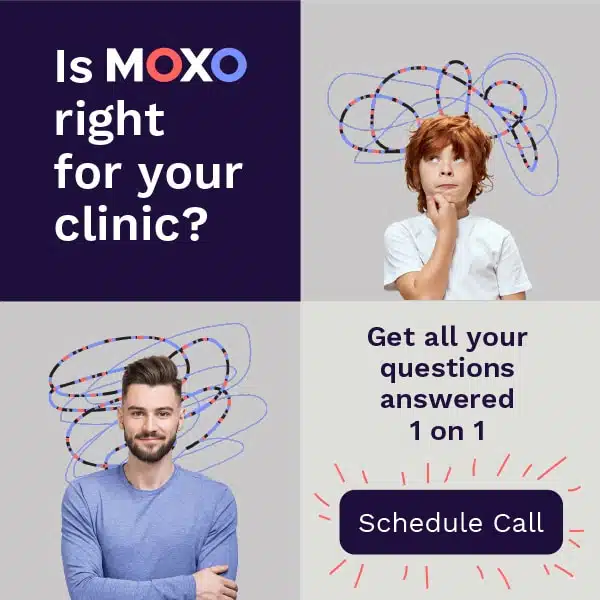Parenting comes with a multitude of challenges, and one of the most perplexing can be understanding and addressing your child’s behavior. Attention Deficit Hyperactivity Disorder, or ADHD, is a common neurodevelopmental condition that affects many children. To get a bird’s eye view of childhood ADHD, here are some stats: As of 2022, 11.4% of U.S. children aged 3-17—around 7.1 million—have been diagnosed with ADHD at some point, and 10.5% (approximately 6.5 million) had met diagnostic criteria for the condition. Research consistently indicates that boys are diagnosed with ADHD at rates two to three times higher than girls, with prevalence estimates ranging from 12% to 15% for boys and approximately 6% to 8% for girls.
Let’s dive deep and understand the difference between ADHD in boys and girls, how you can best help your child, and let’s debunk some common myths about ADHD in children.
Common Myths and Facts about ADHD in Children
Childhood ADHD can often be dismissed by a lot of things: hyperactivity, poor parenting, or ADHD simply being a “phase” during childhood. By exploring these common yet persistent myths, parents can develop a more compassionate, informed approach to support their children with ADHD.
Myth: Childhood ADHD Is Just A Phase
Fact: A comprehensive study was conducted on children diagnosed with ADHD, and it resulted in 60% demonstrating symptom persistence and 41% experiencing both symptoms and impairments of ADHD in adulthood. Experts estimate that 50-86% of the symptoms and impairments of diagnosed childhood ADHD persist into adulthood. Hence, waiting and hoping for your child to grow out of their ADHD symptoms is discouraged as it may result in years of struggling and conflict in different aspects of their lives as they grow undiagnosed.
Myth: Girls Don't Have ADHD Because They Don't Show Symptoms
Fact: While boys are more likely to be diagnosed with childhood ADHD, that doesn’t mean girls don’t have it. The National Center for Health Statistics noted that during 2020-2022, 14.5% of boys in the US had ADHD compared to 8.0% of girls, and these were noted in children at the ages of 5-11 years and 12-17 years.
Girls tend to experience ADHD through daydreaming or inattentiveness in contrast to boys’ hyperactivity and impulse control. Girls can also have difficulty restraining emotional responses, resulting in overreactions over things that seem small or minor to other children.
Myth: Poor Parenting Causes ADHD
Fact: ADHD is a neurological disorder, and brain imaging, such as MRIs, can show the difference between a normal brain and a brain with ADHD. The disorder can come from an accumulation of many environmental and genetic factors. For example, a child can develop ADHD if it runs in the family or if the child was exposed prenatally to alcohol, tobacco, or extreme stress.
Parenting criticism is a common thing among adults. While it’s easy to dismiss particular behaviors like impulsiveness and constant tantrums as a child’s lack of discipline due to poor parenting, it is important to remember that ADHD is a brain condition and, therefore, not the parents’ fault.
Myth: All Children with ADHD are Hyperactive
Fact: There are three main symptoms of ADHD: Inattention, Hyperactivity, and Impulsivity. The child can present a hyperactive-impulsive behavior, which is being extremely active and restless, an inattentive behavior, being distracted most of the time, and experiencing difficulty focusing on things that require effort, like studying, or both combined.
Myth: Children with ADHD Can’t Focus on Anything
Fact: While it’s true that cases of childhood ADHD mean that they can’t usually focus for long periods of time, especially on non-stimulating activities like doing homework or listening to the teacher, children with ADHD are known to be able to focus and concentrate on activities that they find enjoyable and non-repetitive. This is also called hyper-focusing.

Understanding Childhood ADHD Symptoms
Recognizing signs and symptoms of childhood ADHD is crucial for early intervention and support. Studies show that ADHD typically manifests into three distinct behavioral patterns that significantly affect a child’s daily functioning at home and at school. Thus, understanding the following symptom presentations–inattention, hyperactive-impulsive, and combined–can help parents and educators identify and assist children who may benefit from professional assessment and treatment.
Inattention
Children who manifest a predominantly inattentive behavioral pattern go beyond having a typically short attention span. These children struggle to focus on tasks and may often appear as if they are not listening or are forgetful. Here are more signs of inattention:
- Being forgetful in daily activities and routines
- Avoiding or disliking tasks requiring extended periods of focus or effort
- Struggling with the organization of tasks or activities
- Failing to follow through on instructions
- Appearing like they’re not listening when spoken to
- Making mistakes in schoolwork despite understanding the instructions
- Frequently losing items in school or at home
Hyperactivity & Impulsivity
Children with hyperactive-impulsive symptoms often appear to be in perpetual motion—described as being “driven by a motor”—and may act hastily, showing little awareness or consideration of potential consequences. This constant movement and high energy levels could make them appear rude to others. They may also find it challenging to sit still in classrooms or participate in activities that require them to remain quiet, calm, and thoughtful.
Here are more signs of hyperactivity:
- Fidgety hands and feet
- Has difficulty engaging in activities quietly
- Stands and squirms in seat when expected to remain seated
- Blurts answers out before questions are completed
- Interrupts and intrudes into conversations
- Makes decisions without considering consequences
- Struggles with regulating emotions
Combined
Children may also have a combined presentation or show both hyperactive-impulsive and inattentive symptoms. This is often the most noticeable type, especially in classrooms, as children experience worse functional impairments than the first two symptom categories.

How is ADHD in Children Treated?
ADHD treatments typically follow a multimodal approach based on evidence-based guidelines. Experts from the American Academy of Pediatrics (AAP) recommend that:
- For children under 6 years: Parents and therapists training in behavior management
- For children 6 years and older: Combination of medication and behavioral therapy
When healthcare professionals recommend medication, two main classes are considered, and the following medications are usually recommended to manage symptoms:
- Stimulants: methylphenidate (Concerta), amphetamine (Adzenys) are effective in 70-80% of children.
- Non-stimulants: atomoxetine (Strattera), viloxazine (Qelbree), guanfacine (Intuniv), and clonidine (Onyda XR) are recommended for children who don’t respond to stimulants
Prescriptions and dosages of these medications are strictly regulated by the USDA to lessen drug-related incidents or cases because stimulants can also be used as recreational drugs because of their methylphenidate or amphetamine content
Non-medication treatments include gamified interventions such as:
- EndeavorRx offers ADHD games that improve attention function in children aged 8‑17 with ADHD. It’s the first game-based digital therapeutic device for ADHD for children ages 8-12 with inattentive or combined type ADHD.
- Sincrolab offers an AI-based training solution focused on the recovery and development of cognitive abilities. By playing for 15 minutes a day, children can improve their cognitive abilities. They assess the effectiveness of their intervention by administering the MOXO test at multiple stages during the process.

Parenting Tips for Parents of ADHD Kids
Every child is different, and one of the best first steps to becoming a better parent to your child is to ensure proper diagnosis and then develop a treatment and management plan.
Diagnostic tools like MOXO, a continuous performance test that can help accurately identify ADHD and measure your child’s attention, timeliness, hyperactivity, and impulsivity, is trusted by many clinicians, and you may want to ask your doctor if they use it. This computerized attention test can help guide parents and healthcare professionals in formulating personalized treatment approaches for their children.
Here are a few parenting strategies that can be used to help your child:
- Establish routines from morning to bedtime: Use visual schedules and timers to help your child keep track.
- Break tasks into step-by-step processes: Divide responsibilities into smaller steps to make them less complex and easier for your child to digest.
- Implement positive reinforcement: Praise particular deeds or behaviors immediately. This helps your child understand what they’re doing right.
- Limit distractions: Create a dedicated space for your child to do activities like schoolwork and hobbies that are away from gadgets and other stimulating activities.
- Make time for physical activities: Regular exercise helps children with ADHD to release energy and improve their focus and attention afterwards.
- Practice self-care: Parenting a child with ADHD can be emotionally demanding. Take breaks when needed, connect with support groups, and maintain your own well-being as a parent.
The key to managing your child’s ADHD is teamwork. Working with healthcare providers, teachers, and other family members can help create a supportive environment for you and your child to thrive.
For more content on ADHD, attention profiling, new research, and more, click here to return to the MOXO blog homepage.


